“The story of Sheffield starts in 18000 BC in the middle of the last Ice Age" - epic new book charts city's long history
and live on Freeview channel 276
“People were living around Cresswell Crags and wandered across to an area which became Sheffield. The people became part of the Neolithic age,” he says. The Neolitic Age was the final stage of cultural evolution among prehistoric humans. So Sheffield has form.
Dr Cooper, who lives in Ecclesall, spent five years working on the book after an internet search by a local history publisher brought up his name.
Advertisement
Hide AdAdvertisement
Hide AdThis good fortune was connected to the local history walks he conducts around the city for international students from the University of Sheffield, where he is a student support officer. “They Googled local history Sheffield and said my name came up because of the guided tours,” he says.
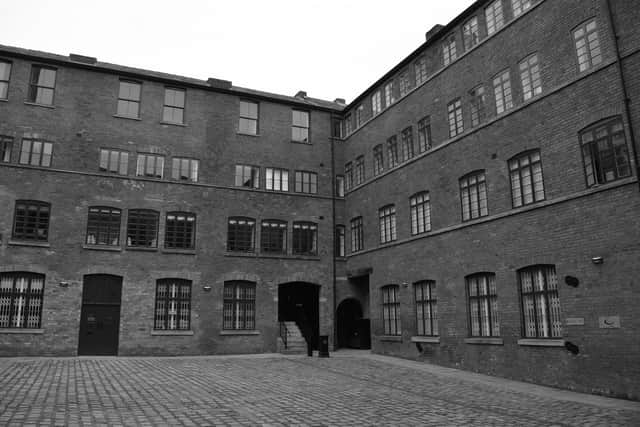

Dr Cooper enjoys these tours because they make him think. “I get asked questions people from the city wouldn’t ask. Why are the buildings made of brick? Why are they so dirty looking? Why don’t you build nice new concrete buildings? They don’t take anything for granted and that rubbed off on me in the book.”
The 60-year-old is from Birmingham but has lived in Sheffield for 30 years and both his sons were born here. A historian, he stresses Sheffield’s story is one of fierce independence, Dr Cooper describes it as a revolutionary city.
“I wanted to work out what was different,” he said. “The strong sense of independence comes from being non-conformist. Sheffield doesn’t have strong roots in the Church of England which brings political independence.
Advertisement
Hide AdAdvertisement
Hide Ad“In the middle of the 18th Century, there were riots across the country in support of the king. In Sheffield there is a massive protest in support of the French Revolution.
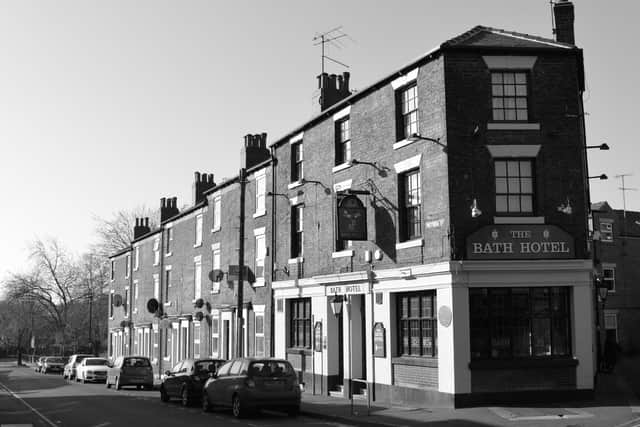

“There were big meetings in Paradise Square, which the Government tried to ban. There were 20,000 people there supporting them, that’s around half the population of the time supporting the French Revolution.”
Dr Cooper first came to Sheffield in the 1980s because his brothers were at university here. It was the time of the People’s Republic of South Yorkshire - more independence, more revolutionary thinking.
“Standing up against things, this is the people of Sheffield. I wanted the book to be a people’s history. It isn’t just the miners at Orgreave, this is the mood of the city. It was anti-Thatcher, there were stories of the red flag being flown above the Town Hall, we were painted as lefty hotheads, but it was more than that.
"People were looking for representation.
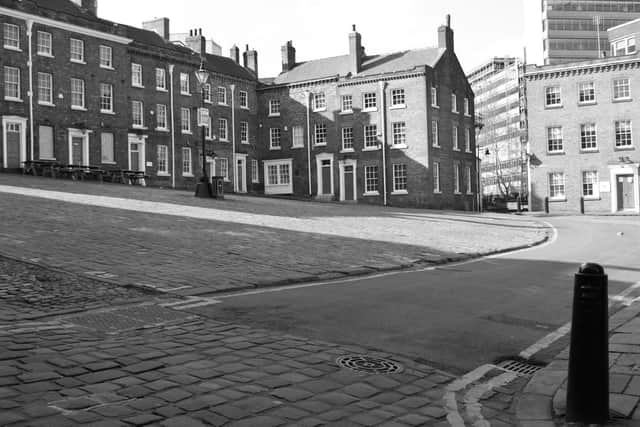

Advertisement
Hide AdAdvertisement
Hide Ad“Look at the reaction to the support for the French Revolution. Hillsborough Barracks. The threat of military force. In 1850 the army was regularly used on the streets. The city was also one of the first to have a uniformed police presence, which was really unpopular.
“But it is not a few troublemakers, there’s something in the air here, it’s a matter of how people work. I don’t think there is any other place which has such a strong working class base.”
His publisher came up with the phrase the story of the world’s first working-class city, which he likes. The history back it up.
Dr Cooper says: “Between 1860-70, two thirds of the population are working in the metal trade, so there was a small middle class and a strong working class. The culture was of a working class and remains so.
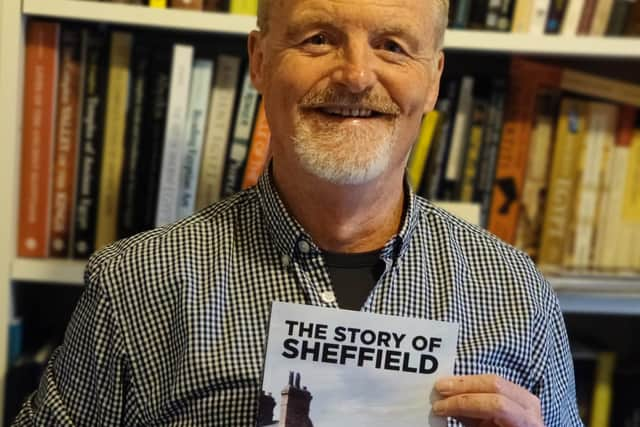

Advertisement
Hide AdAdvertisement
Hide Ad“Manchester and Leeds was more of a merchant culture, they invested in buildings. In Sheffield, what matters is getting together in pubs.”
His history walks show this. Between 1850-70, in a row of terraced houses, there would be one pub for every six houses. Victoria Street in the city centre is typical and he takes students there.
The pubs were fed by cutlery workers. Many were one man bands so they were their own bosses, who could dictate when they worked. “They got into a routine of every Monday off, they called it Saint Monday and went to the pub. Sheffield was the first city shaped by working people,” says Dr Cooper.
On his walks, new students are often surprised by how small Sheffield seems. They use a Chinese word for the city which translates as Sheff-village. But in their second semester, the students have begun to understand it is a city of many communities.
Advertisement
Hide AdAdvertisement
Hide AdDr Cooper takes them to the Leopold Hotel. “It is what was Firth College which became the University of Sheffield.” Butcher Works on Arundel Street and the Steam Yard off Division Street give a flavour of the cutlery trade.
That’s the past, what about the future? At first, it doesn’t sound promising. “If I am on Fargate it is depressing. It’s a concern. It is a consequence of not having a powerful middle class.
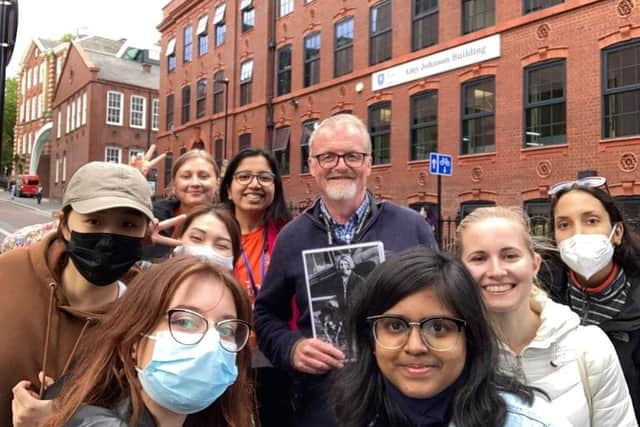

“Steel brought money to Sheffield but there were not the levels of investment in the city that happened in Manchester, Birmingham or Leeds. Sheffield has struggled.”
In the book he adds: “Certainly, the systematic removal of central government support from cities such as Sheffield, coupled with inevitable debt and the effects of successive austerity policies, have presented a massive challenge over the past 40 years.”
Advertisement
Hide AdAdvertisement
Hide AdAnd then there’s covid. “The pandemic brought many of Sheffield’s structural weaknesses into sharp focus – not least the economic decline of the city centre, which had begun with the construction of the Meadowhall shopping centre a generation earlier.”
But happily he is still hopeful. His book concludes: “Throughout the course of their story, the people of Sheffield have repeatedly demonstrated the ability to summon collective strength in the face of adversity, whether the struggle has been against forces of oppression from within the country or enemy assault from outside.
“For half a century from 1926 to 1976, Sheffield led the way in showing how a city can be run for the benefit of its people, and how an inclusive, caring society brings benefits to all.
“In the light of this experience, and if the clear lessons of the early 2020s can be learned, there is the possibility of a positive future, both for Sheffield and its people, and for the country as a whole.”
Advertisement
Hide AdAdvertisement
Hide AdHis beacons of hope are the Advanced Manufacturing Research Centre and Forgemasters. The AMRC is a network of world-leading research and innovation centres working with advanced manufacturing companies around the globe based on the edge of the city. Forgemasters is a global leader in steel production and engineering, based in Attercliffe.
“Expertise and collaboration have the potential to bring in significant money,” he says. “Forgemasters is an amazing story of an industrial survivor which will now be making castings for nuclear submarines.
“The AMRC and names like Boeing has the exciting potential to make Sheffield once again a hub of specialist industrial application. Sheffield has kept itself going through hard times due to its expertise in special steels and that carries on in the AMRC and Forgemasters.
“It might take 10 years but it is reason to be optimistic, not pessimistic.”
Advertisement
Hide AdAdvertisement
Hide AdDr Cooper took the photos in his book and there are plans for an exhibition of these in the Central Library in March/April. The Story of Sheffield is published by The History Press and is on sale priced £20 at Waterstones in Orchard Square.
